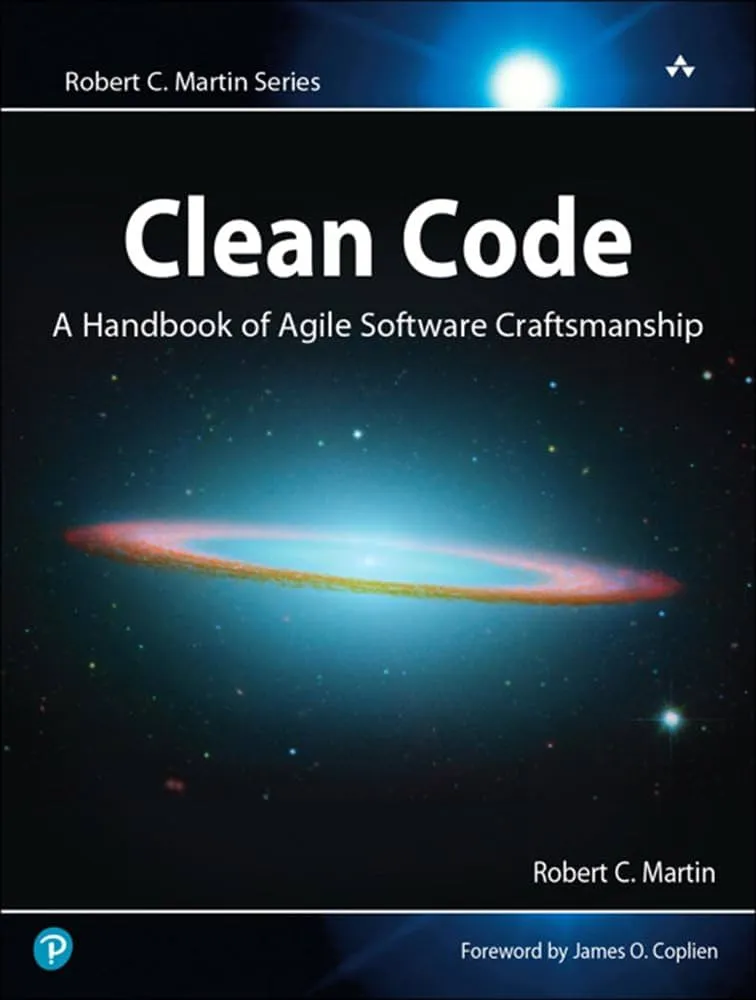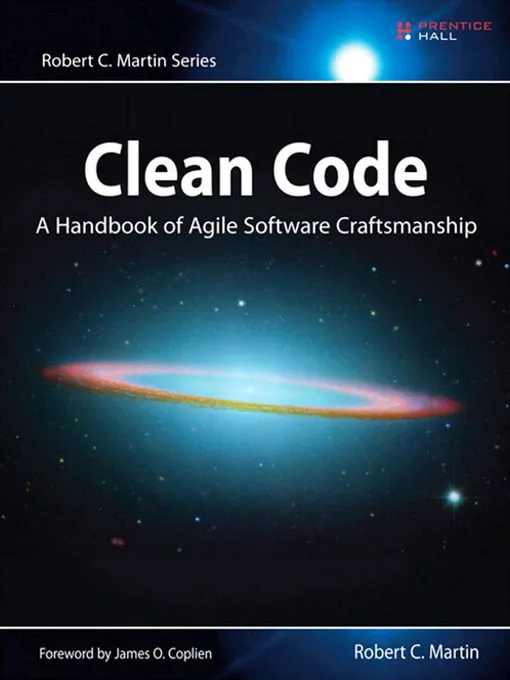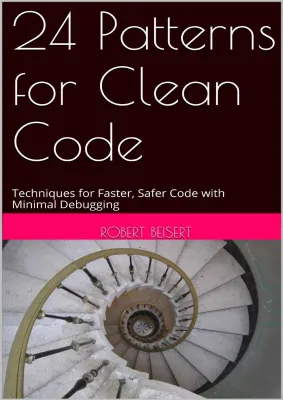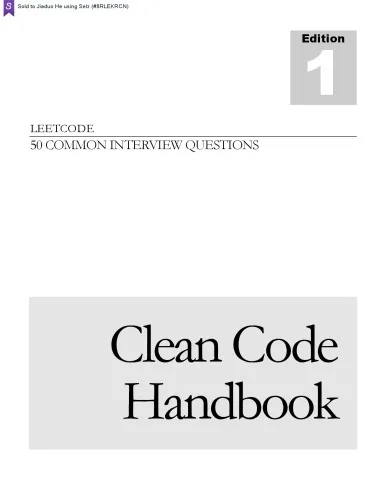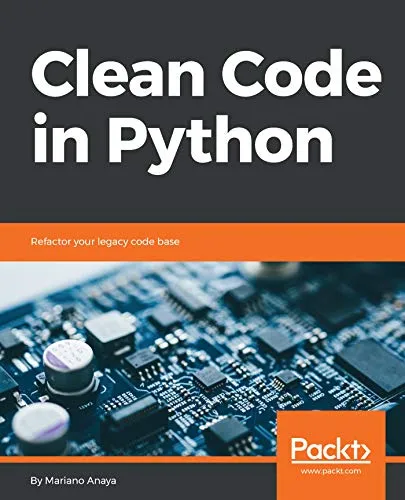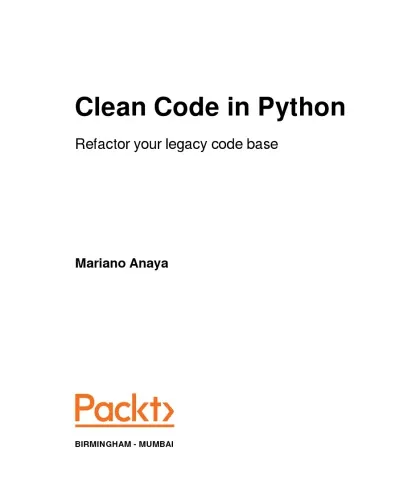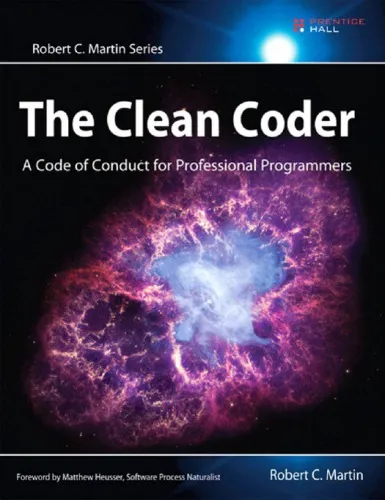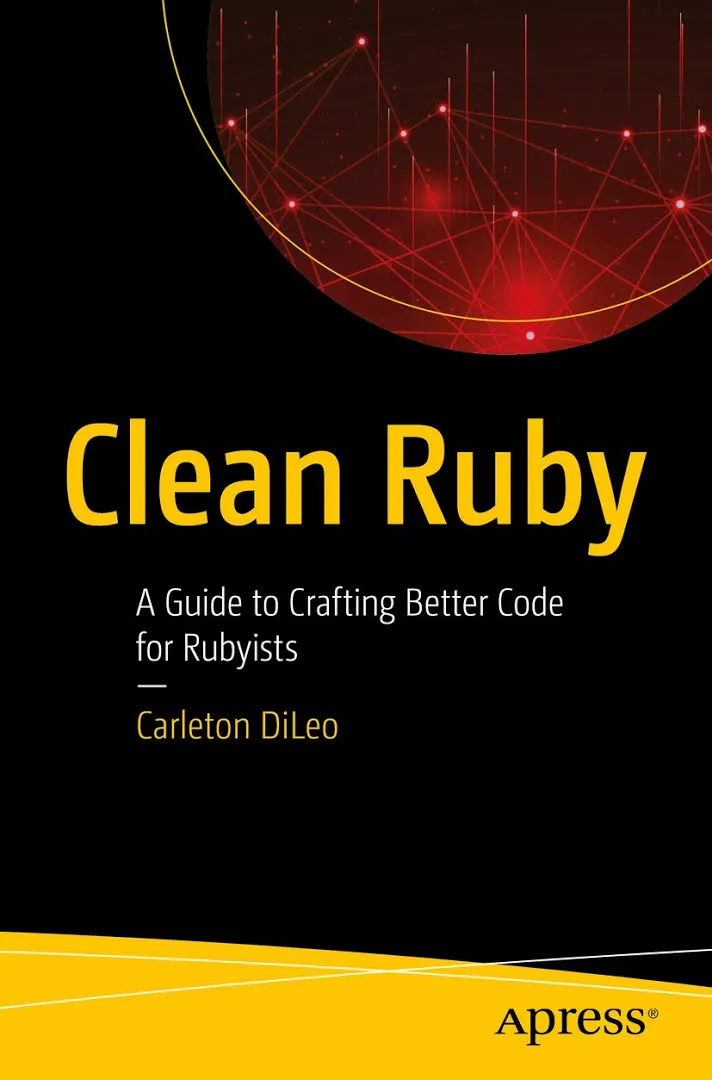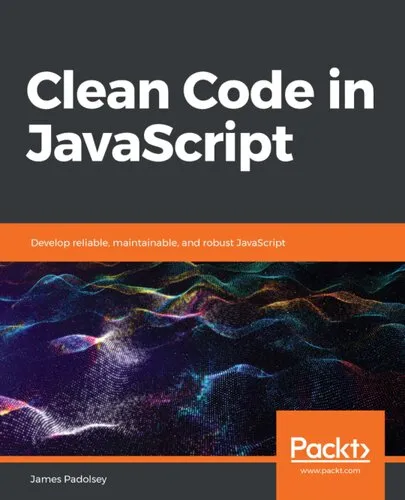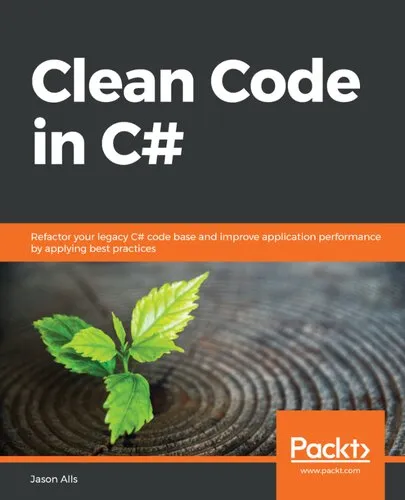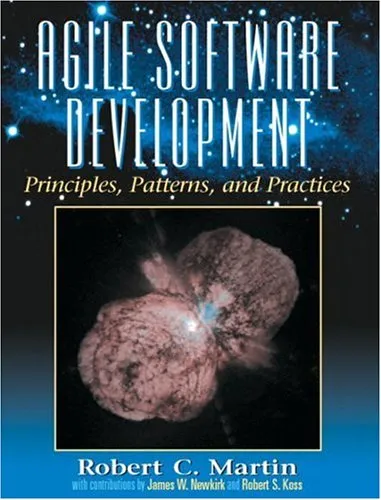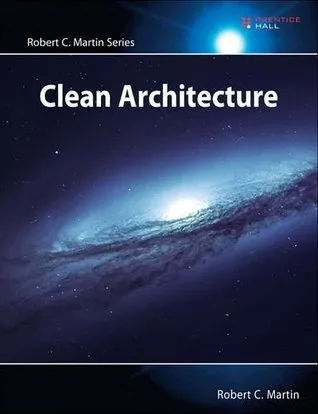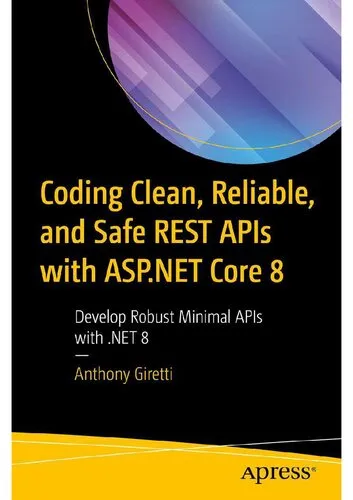Clean Code: A Handbook of Agile Software Craftmanship
5.0
بر اساس نظر کاربران

شما میتونید سوالاتتون در باره کتاب رو از هوش مصنوعیش بعد از ورود بپرسید
هر دانلود یا پرسش از هوش مصنوعی 2 امتیاز لازم دارد، برای بدست آوردن امتیاز رایگان، به صفحه ی راهنمای امتیازات سر بزنید و یک سری کار ارزشمند انجام بدینکتاب های مرتبط:
Persian Summary
کتاب "کد تمیز راهنمای دستیار نرم افزار چابک" - مروری جامع
در این مقاله، به بررسی کتاب "کد تمیز راهنمای دستیار نرم افزار چابک" Clean Code A Handbook of Agile Software Craftsmanship نوشته "مارتین رابرت سی" Robert C. Martin میپردازیم. این کتاب یکی از مهمترین منابع برای توسعهدهندگان نرم افزار است که به اصول و روشهای نوشتن کد تمیز و چابک میپردازد.
خلاصه کتاب
کتاب "کد تمیز" به دو بخش اصلی تقسیم میشود. بخش اول به اصول و مبانی نوشتن کد تمیز میپردازد و بخش دوم به روشهای عملی و تکنیکهای نوشتن کد چابک اختصاص دارد. در بخش اول، نویسنده به مباحثی مانند نامگذاری متغیرها، توابع و کلاسها، ساختار کد، و استفاده از کامنتها میپردازد. در بخش دوم، نویسنده به تکنیکهای مانند استفاده از متدها، کلاسها، و اشیاء، و همچنین به مباحثی مانند تست و دیباگینگ میپردازد.
نویسنده در این کتاب به توسعهدهندگان نرم افزار میآموزد که چگونه کد خود را تمیز، خوانا، و چابک بنویسند. او همچنین به توسعهدهندگان میآموزد که چگونه از الگوهای طراحی و اصول طراحی نرم افزار استفاده کنند تا کد خود را بهبود بخشند.
نکات کلیدی
- نامگذاری متغیرها، توابع و کلاسها باید معنادار و توصیفی باشد.
- ساختار کد باید تمیز و خوانا باشد.
- استفاده از کامنتها باید به حداقل برسد.
- استفاده از متدها، کلاسها، و اشیاء باید به دقت انجام شود.
- تست و دیباگینگ باید به طور منظم انجام شود.
نقل قولهای معروف از کتاب
کد تمیز، کدیست که هر کس بتواند آن را درک کند.
کد تمیز، کدیست که هر کس بتواند آن را تغییر دهد.
کد تمیز، کدیست که هر کس بتواند آن را تست کند.
چرا این کتاب مهم است؟
کتاب "کد تمیز" یکی از مهمترین منابع برای توسعهدهندگان نرم افزار است. این کتاب به توسعهدهندگان میآموزد که چگونه کد خود را تمیز، خوانا، و چابک بنویسند. این کتاب همچنین به توسعهدهندگان میآموزد که چگونه از الگوهای طراحی و اصول طراحی نرم افزار استفاده کنند تا کد خود را بهبود بخشند.
این کتاب برای توسعهدهندگان نرم افزار در تمام سطوح مهم است. اعم از توسعهدهندگان مبتدی تا توسعهدهندگان حرفهای، این کتاب میتواند به آنها کمک کند تا کد خود را بهبود بخشند و به توسعهدهندگان نرم افزار چابک تبدیل شوند.
Clean Code A Handbook of Agile Software Craftmanship - A Comprehensive Guide
Written by Robert C. Martin also known as "Uncle Bob" 'Clean Code A Handbook of Agile Software Craftmanship' is a highly acclaimed book that has revolutionized the way developers approach software design and development. The book focuses on the principles and best practices of writing clean maintainable and efficient code which is essential for any successful software project.
Detailed Summary of the Book
The book is divided into three main sections principles case studies and heuristics. The first section delves into the principles of clean code including the importance of naming functions error handling and boundaries. Martin emphasizes the need for developers to take responsibility for the quality of their code and to strive for simplicity clarity and elegance.
The second section presents several case studies that demonstrate the application of clean code principles in real-world scenarios. These case studies cover a range of topics from simple algorithms to complex system design and provide valuable insights into the thought process and decision-making involved in writing clean code.
The third section focuses on heuristics which are guidelines or rules of thumb that can help developers make better decisions when writing code. Martin discusses various heuristics including the Law of Demeter the Single Responsibility Principle and the Open-Closed Principle and explains how these heuristics can be applied in different contexts.
Key Takeaways
- The importance of naming Martin emphasizes the need for clear descriptive and consistent naming conventions to make code easier to understand and maintain.
- Functions The book highlights the importance of short focused functions that perform a single task and have minimal side effects.
- Error handling Martin stresses the need for robust error handling mechanisms that can detect and recover from errors in a predictable and reliable manner.
- Boundaries The book discusses the importance of defining clear boundaries between different components and systems to ensure loose coupling and high cohesion.
- Test-driven development Martin advocates for test-driven development as a means of ensuring that code is testable maintainable and meets the required functionality.
Famous Quotes from the Book
"Clean code is not just about aesthetics it's about survivability. It's about making the codebase easy to understand modify and extend."
"The only way to make the deadlinethe only way to go fastis to keep the code clean."
"A good system is one that is easy to change and a good design is one that makes it easy to change the system."
Why This Book Matters
'Clean Code A Handbook of Agile Software Craftmanship' is a must-read for any software developer regardless of their level of experience or expertise. The book provides a comprehensive guide to writing clean maintainable and efficient code which is essential for any successful software project.
The book's focus on principles case studies and heuristics makes it a valuable resource for developers who want to improve their coding skills and produce high-quality software. The book's emphasis on simplicity clarity and elegance also makes it a great resource for developers who want to improve their overall design and development skills.
Furthermore the book's relevance extends beyond software development to other fields such as engineering architecture and design where the principles of clean code can be applied to improve the quality and maintainability of designs and systems.
دانلود رایگان مستقیم
شما میتونید سوالاتتون در باره کتاب رو از هوش مصنوعیش بعد از ورود بپرسید
دسترسی به کتابها از طریق پلتفرمهای قانونی و کتابخانههای عمومی نه تنها از حقوق نویسندگان و ناشران حمایت میکند، بلکه به پایداری فرهنگ کتابخوانی نیز کمک میرساند. پیش از دانلود، لحظهای به بررسی این گزینهها فکر کنید.
این کتاب رو در پلتفرم های دیگه ببینید
WorldCat به شما کمک میکنه تا کتاب ها رو در کتابخانه های سراسر دنیا پیدا کنید
امتیازها، نظرات تخصصی و صحبت ها درباره کتاب را در Goodreads ببینید
کتابهای کمیاب یا دست دوم را در AbeBooks پیدا کنید و بخرید
سوالات پرسیده شده از این کتاب
2583
بازدید5.0
امتیاز2
نظر98%
رضایتنظرات:
5.0
بر اساس 2 نظر کاربران
amir
26 نوامبر 2023، ساعت 12:36
بخونید و رعایت کنید!
ali12
17 دسامبر 2024، ساعت 6:16
یکی از اولین کتابهایی که من در حوزه برنامه نویسی خوندم(البته بجز کتابهای درسی) و بسیار مفید و آموزنده بود. به همه برنامهنویسها پیشنهادش میکنم.
Questions & Answers
Ask questions about this book or help others by answering
No questions yet. Be the first to ask!
